For all communication I prefer my communication partner, if they can, to be on my level, it can be hard to be looking up to lip read (I have a hearing impairment) and then reaching down to use my IT or other communication resources.
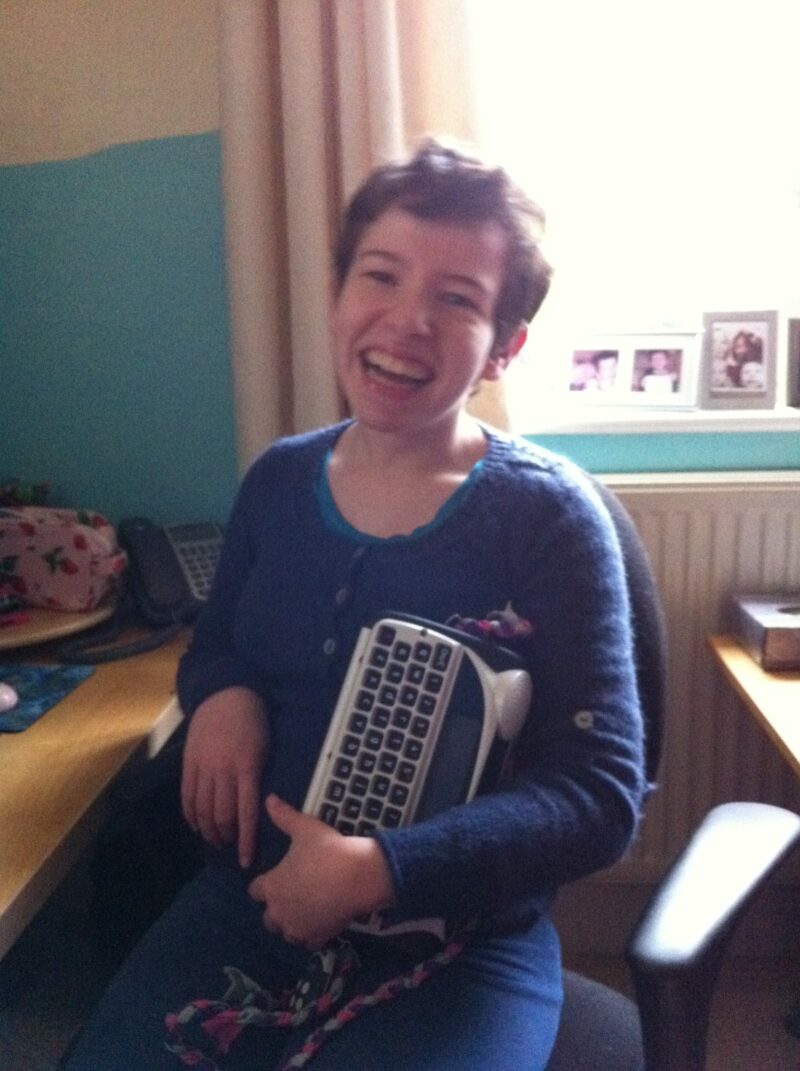
As an electronic communication aid user if my device is not available for any reason I still want, and need, to be able to communicate with others.
My voice is always my first choice for interaction, but not everyone easily understands me. My dysarthria (lack of muscle control in my mouth, tongue and throat) makes me unintelligible to many people. This means I need back up strategies:
Understanding my natural speech:
- First understanding my speech is much easier in context, but we need to establish the topic
- I will endeavour to speak clearly, just repeat each word as we go along so we both know you have understood it, please don’t guess or try to finish my sentences as this can be frustrating for us both
- If you don’t understand a particular word I will spell it verbally (other spelling strategies below). Remember some letters are similar so if I say P but you hear B and I say no, then try other letters that sound like what you thought you heard
- Yes and no questions are boring in normal conversation but helpful if you think you know the topic area so we can move on
- As a last resort if things have broken down a communication partner can give me choices to establish the topic, especially if we are sharing experiences eg at a boccia competition.
Body language, facial expression, eye pointing and gesture
- I try always to supplement my communication with non-verbal communication
- If I want to answer yes quickly then I will look up, and for no I shake my head – this is particularly useful if I am unwell or in an emergency
Using other tech:
- To get to this stage we will probably have had to use my natural speech or other tools!
- If I’m travelling away then I may have a second communication aid or my phone, both of these have my speech programme with voice output.
Failing this
- If someone has an Apple iPhone I might be able to spell out on the keyboard if they are prepared to share in an emergency
Using props and other tools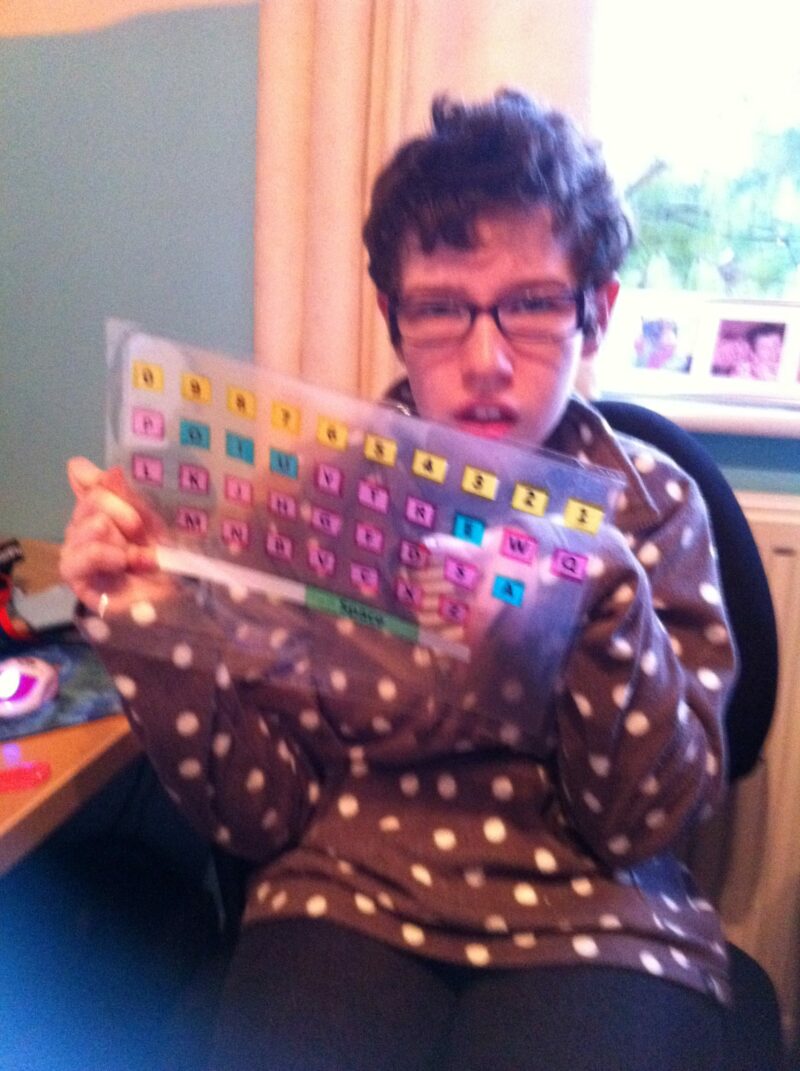
I carry in my handbag and other bags letter cards. These are made using laminating pouches and letters in a qwerty keyboard layout on my side (and reversed for my communication partner). By holding the card up between us I point to each letter in a word and then I space to indicate the end of the word. The communication partner repeats each letter and then the whole word as we go along. Slow but effective!
- If I don’t have a letter card then the following strategies can always work if the communication partner:
- Gives me their hand and I draw the letter with my finger in their palm, they then repeat it until we have the whole word
- Gives me pen(cil) and paper (my writing is poor but you will be able to read what I write)
- I will also point to other items in the area, or take you to something that is relevant to our interaction.
All this makes it sound like communication is challenging, please don’t be scared of talking to me. Other communication strategies can be found by searching on the blog for AAC awareness or communication and there are other resources under the Communication tab.

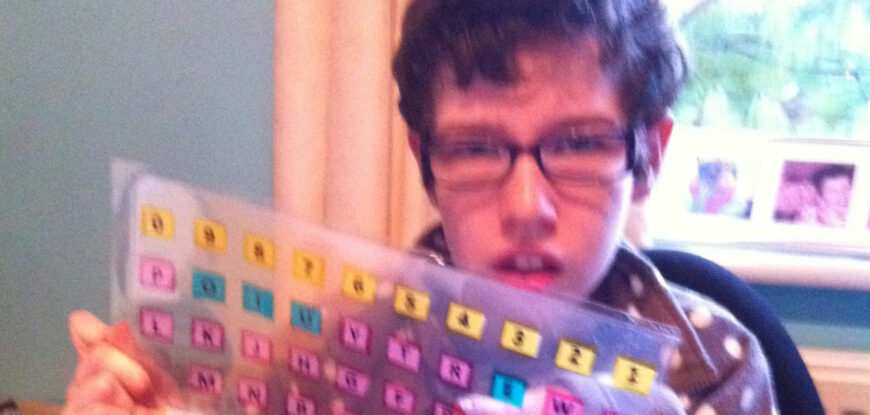

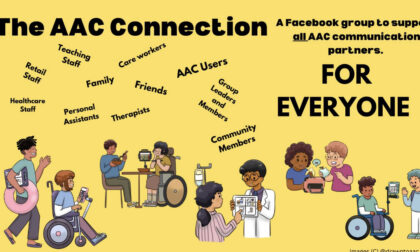
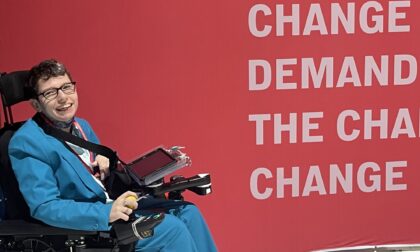
If you found this interesting or
helpful please feel free to share.